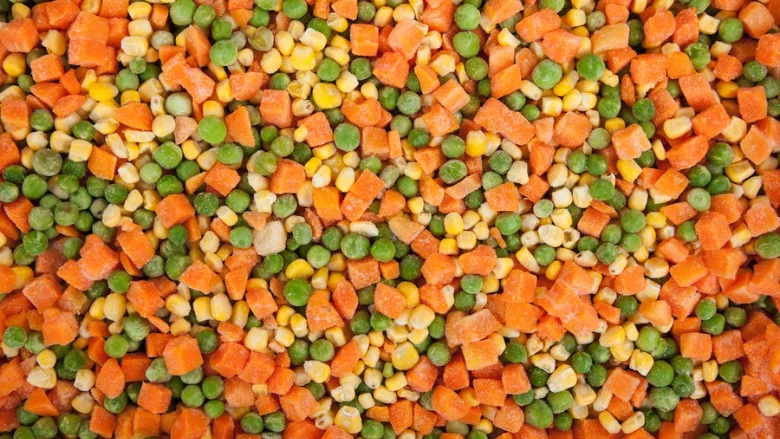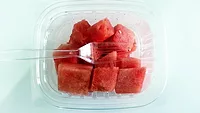JERMA Develops Four New Risk Assessment Models for Listeria

Credit: Tohid Hashemkhani (tohid-hashemkhani-3935807) via Pexels
In response to a request by the Codex Committee on Food Hygiene, experts associated with the Food and Agriculture Organization of the United Nations (FAO) and the World Health Organization (WHO) are focusing on Listeria monocytogenes. The Joint FAO/WHO Expert Meetings on Microbial Risk Assessment (JERMA) convened around the topic October 24–28, 2022 in Rome, Italy.
The experts developed risk assessment models for L. monocytogenes on leafy greens, frozen vegetables, cantaloupe melon, and ready-to-eat (RTE) seafood. The group also provided recommendations to inform possible future revisions to the Codex Alimentarius “Guidelines on the Application of General Principles of Food Hygiene to the Control of Listeria monocytogenes in Foods.”
In light of current data and risk assessment approaches, JERMA agreed that a risk assessment model should consider primary production to consumption, be applied in a modular approach, and be flexible for reuse with other similar food commodities. The experts note that the primary production (pre-harvest) module should take into account how the introduction of L. monocytogenes into raw materials is influenced by season, agrifood practices, and climate change. Additionally, the possibility of cross-contamination from primary production to consumption should be considered.
Updated risk assessment models will adapt the dose response from existing models that take into account variability in pathogen virulence and consumer susceptibility, and are common to all food commodities. Whole genome sequencing (WGS) and other genomomics data on L. monocytogenes may also inform the risk assessment; however, the uncertainty between phenotypic and genotypic profiles of the pathogen should be carefully examined before being used in risk assessment. For example, the global prevalence of L. monocytogenes in exposure assessment can be replaced by the specific prevalence for groups of sequence types and clonal complexes (STs/CCs) when WGS has demonstrated that groups of STs/CCs are overrepresented in a specific commodity.
JERMA underlines that an uncertainty and sensitivity analysis should be performed to identify the model inputs and assumptions that have the greatest impact on the model outputs, which will help identify relevant “what-if” scenarios and data needs. Different modules for various stages of a food chain can be used to evaluate the stages’ impact on risk in “what-if” scenarios.
More data on L. monocytogenes in the food chain from different sampling and testing programs would help to better inform risk assessment, according to the experts. Knowledge of the pathogen’s occurrence, virulence, and dose response would enable risk assessment for different STs/CCs of L. monocytogenes.
Leafy Greens
For leafy greens, JERMA pointed to production activities including irrigation, fertilization, and other on-farm management practices as impactful on the occurrence of L. monocytogenes on the farm, which could be modeled in a primary production (pre-harvest) module. Additionally, the experts recommended the consideration of season within the risk assessment model, as season is a factor that drives the microbial kinetics in soil and on leaves.
Looking for quick answers on food safety topics?
Try Ask FSM, our new smart AI search tool.
Ask FSM →
JERMA identified stages to be represented in the risk assessment, including: growth of leafy greens (field, controlled environment, and hydroponics), harvesting, cooling, washing, sanitizing, cutting, packaging, multiple transportation steps, display at retail, and consumer practices. The model should also be structured to measure the effectiveness of the prevention of contamination by soil and irrigation water, the efficacy of washing with or without sanitizers, the prevention of cross-contamination along the production chain, the application of good hygiene practices (GHPs) during processing, the efficacy of sampling programs, and the impact of consumer handling and storage practices.
Both RTE, cut and packaged leafy greens and non-RTE whole leafy greens should be addressed in the model and should share a common primary production module. Lettuce was proposed as a representative commodity for the leafy greens model.
Frozen Vegetables
The model for frozen vegetables pertains to non-RTE, blanched and frozen vegetables. The main risk factors for L. monocytogenes from frozen vegetables are concentrated in the stages of processing to consumption, and the model should consider contamination post-blanching.
JERMA identified stages to be represented in the risk assessment, including: cleaning; washing; blanching; freezing; packaging; display at retail; and consumer practices such as defrosting, cooking, and common practices relating to non-intended use. Additionally, the model should measure the effectiveness of blanching or other inactivation steps pre- or post-packaging, the prevention of contamination post-blanching, and the efficacy of sampling programs at the end of processing. Finally, the risk assessment should evaluate the impact of different consumer practices related to storage and cooking, and the impact of efforts to shift consumer practices to increase compliance with safe cooking of non-RTE frozen food.
Cantaloupe
The cantaloupe risk assessment model was designed for whole and RTE diced cantaloupe, considering primary production to consumption. Relevant stages identified by JERMA include: growing on the field, harvesting, cooling, washing, sanitizing, dicing, display at retail, consumer practices, and multiple transportation steps.
Opportunities for cross-contamination of L. monocytogenes throughout cantaloupe production to consumption should be taken into account and include: irrigation water and soil at pre-harvest, pooling water, food contact surfaces, dicing the fruit, and market practices. The risk assessment should also measure the effectiveness of the prevention of contamination during pre-harvest, the application of on-farm preventive measures, the effect of processing, and the impact of consumer practices.
Flexibility is needed in the model to account for the impact of farming practices, extreme weather events, climate change, and diverse market practices. The effect of the time and temperature profiles throughout the food supply chain is also important to include in the risk assessment.
RTE Seafood
The model for RTE seafood takes into account primary production (harvest and farming) to consumption, and hot- and cold-smoked fish and gravad fish were proposed as representative foods for the category. The risk assessment should be flexible to accommodate other RTE fish products in the future such as sashimi and ceviche, the experts noted.
Relevant stages to be represented in the risk assessment were by identified JERMA, including: growth of fish (open sea and aquaculture), harvesting, evisceration and head cutting, filleting, different smoking steps, gravad fish steps, freezing, slicing, packaging, multiple transportation steps, retail, and consumer handling. Cross-contamination should be considered in the model because RTE fish products are produced in several steps, sometimes in different facilities spanning national borders.
JERMA suggests that the effect of added lactic acid bacteria cultures for biocontrol of L. monocytogenes be evaluated in the risk assessment. The experts also state that WGS/strain typing data could be used to assess dominant strains at different production stages to inform the cross-contamination module.
Next Steps
As a next step, the models proposed by JERMA should be programmed, tested, and reviewed. The review should verify that the models are flexible to run different scenarios and incorporate new data to account for national, regional, and international context.
Following the review, the models should be made publicly available. JERMA believes the novel models have the potential to advance knowledge on L. monocytogenes hazards as they incorporate advances in next generation technologies, and span the stages from primary production to consumption.









